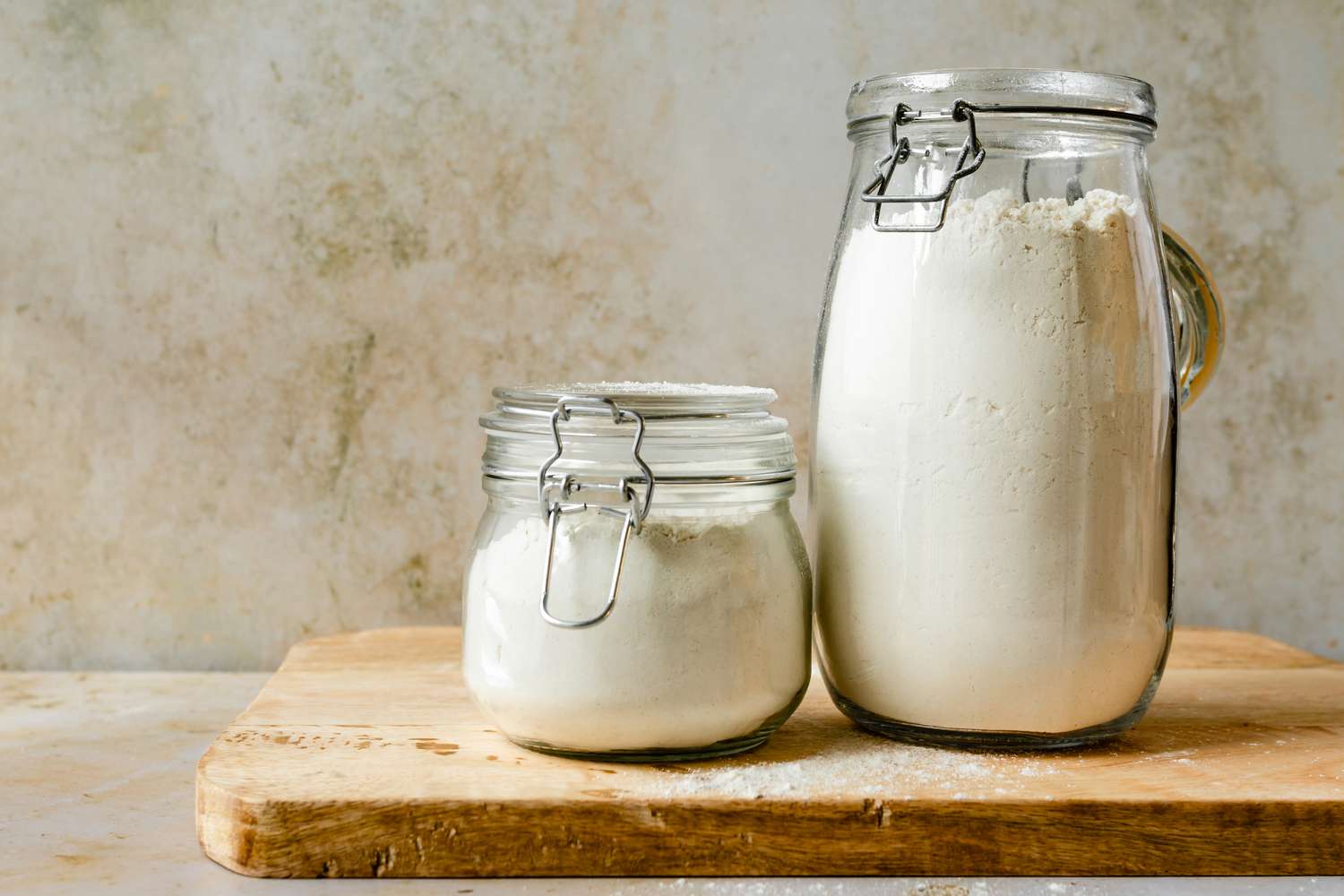

Articles
How To Store White Flour Long-Term
Modified: January 6, 2024
Learn effective methods to store white flour for long-term use. Read our articles and get expert tips to keep your flour fresh and preserved.
(Many of the links in this article redirect to a specific reviewed product. Your purchase of these products through affiliate links helps to generate commission for Storables.com, at no extra cost. Learn more)
Introduction
Storing white flour for the long term may not be the first thing that comes to mind when you think about food preservation. However, having a stockpile of white flour can be a wise choice, especially in emergency situations or during times when access to fresh supplies is limited.
In this article, we will explore why storing white flour long-term is beneficial and provide you with valuable tips on how to do it effectively. Whether you’re a seasoned prepper or simply looking to extend the shelf life of your flour, this guide will walk you through the process and help you make the most of your stored provisions.
From understanding the factors to consider before storing white flour, to selecting the right storage containers and ensuring proper environmental conditions, we will cover everything you need to know to ensure your white flour remains fresh and usable for an extended period of time. So let’s dive in!
Key Takeaways:
- Storing white flour long-term ensures a reliable supply for emergencies, cost savings, and meal flexibility. Proper preparation, storage, and monitoring are key to maintaining freshness and usability.
- Choosing the right storage containers, preparing flour with oxygen absorbers, and monitoring for freshness are essential for long-term white flour storage success. Experimenting with recipes and using in small batches maximize its usability.
Read more: How To Store Flour Long Term
Why Store White Flour Long-Term?
White flour is a staple ingredient in many households. It is versatile and can be used to make a wide variety of baked goods, from bread and rolls to cakes and pastries. Having a supply of white flour on hand allows you to continue enjoying these delicious treats even when fresh supplies are hard to come by. Here are some reasons why storing white flour long-term can be beneficial:
- Emergency Situations: During natural disasters, power outages, or other emergencies, access to fresh groceries may be limited. Having a stockpile of white flour ensures that you can still bake nutritious homemade bread or other baked goods to sustain yourself and your family.
- Cost Savings: Buying white flour in bulk and storing it for the long term can be more cost-effective than purchasing small quantities. You can take advantage of sales or discounts and avoid price fluctuations that often occur in the food market.
- Food Security: Having a well-stocked pantry provides a sense of security knowing that you have enough food to sustain yourself during challenging times. Storing white flour long-term is a proactive step towards food security and self-sufficiency.
- Flexibility in Meal Planning: White flour can be used to create a wide variety of dishes, both sweet and savory. By having a supply of white flour on hand, you have more options when it comes to meal planning and can easily whip up a comforting batch of pancakes, pasta, or homemade pizza dough.
- Long Shelf Life: When stored properly, white flour can be preserved for an extended period of time. By implementing the right storage techniques, you can ensure that your white flour remains fresh and usable for several months or even years.
Now that you know the benefits of storing white flour long-term, it’s time to delve into the factors to consider before you embark on your flour storage journey. By understanding these factors, you can make informed decisions and set yourself up for success in preserving your white flour effectively.
Factors to Consider Before Storing White Flour
Before you start storing white flour for the long term, there are several factors you should take into consideration to ensure optimal preservation. These factors will help you make informed decisions about the quantity of flour to store, the necessary supplies, and the appropriate storage conditions. Here are the key factors to consider:
- Storage Quantity: First and foremost, determine how much white flour you need to store. Consider your household size, daily consumption, and the duration you want your supply to last. This will help you estimate the quantity of flour you should store to meet your needs.
- Quality of Flour: The quality of the white flour you choose for storage is crucial. Opt for high-quality flour with a low moisture content to ensure better preservation. Look for reputable brands and check the expiration dates before purchasing.
- Proper Packaging: Packaging plays a vital role in maintaining the freshness and quality of your white flour. Choose packaging that is airtight and made of food-grade materials. Consider using multiple smaller packages rather than one large container to avoid exposing the entire supply every time you open it.
- Moisture Control: Moisture is the enemy when it comes to storing white flour. Excess moisture can lead to mold or bacterial growth, rendering your flour unusable. Ensure that the storage containers are moisture-proof and keep the flour away from areas with high humidity.
- Pest Prevention: It’s important to safeguard your stored flour from pests like insects and rodents. Use pest-resistant storage containers and consider adding pest control measures such as desiccants or bay leaves to deter pests from infesting your flour supply.
- Storage Location: Choose an appropriate storage location that is cool, dry, and dark. Avoid areas that are exposed to direct sunlight or fluctuating temperatures, as these conditions can affect the quality of the flour and shorten its shelf life.
- Labeling and Rotation: Properly label your stored flour containers with the date of storage. This will help you keep track of the freshness and ensure you use the oldest supply first. Regularly rotate your stock to prevent any flour from going to waste.
By taking these factors into consideration, you can establish an effective plan for storing your white flour long-term. Now that we have covered the important considerations, let’s move on to choosing the right storage containers for your white flour.
Choosing the Right Storage Containers
When it comes to storing white flour for the long term, choosing the right storage containers is essential. The containers you use can make a significant difference in preserving the freshness and quality of your flour. Here are some factors to consider when selecting storage containers for your white flour:
- Airtightness: Look for containers that provide airtight seals to prevent air, moisture, and pests from infiltrating your flour. Airtight containers help maintain the freshness and extend the shelf life of your stored flour.
- Material: Opt for food-grade containers that are made of materials such as plastic or glass. These materials are non-reactive and won’t leach harmful chemicals into your flour. Make sure the containers are BPA-free and safe for long-term food storage.
- Size and Shape: Consider the quantity of white flour you plan to store and choose containers that can accommodate that volume. It’s also beneficial to choose containers of manageable sizes that are easy to handle and stack, saving space in your storage area.
- Transparency: Containers with transparent sides or clear lids allow you to easily see the contents without opening them. This helps you quickly identify and locate your stored flour without exposing it to air unnecessarily.
- Pest Resistance: Select containers that are pest-resistant, with secure closures that keep insects and rodents out. Avoid containers with openings or weak seals that can serve as entry points for pests.
- Stackability: If storage space is limited, consider containers that are designed to stack neatly. Stackable containers help maximize space utilization and make accessing your flour supplies more convenient.
- Labeling: Choose containers that have ample space for labeling. Properly labeling your containers with the date of storage and other relevant information will help you keep track of freshness and facilitate easy rotation.
Considering these factors when selecting storage containers will ensure that your white flour is properly protected and preserved for the long term. Now that you have chosen the right containers, let’s move on to the next step: preparing your white flour for long-term storage.
Preparing White Flour for Long-Term Storage
Before you store white flour for the long term, it’s important to take some preparatory steps to ensure its quality and longevity. Proper preparation will help minimize the risk of spoilage and maintain the nutritional value of your flour. Here’s a step-by-step guide on how to prepare white flour for long-term storage:
- Sift the Flour: Begin by sifting the white flour to remove any lumps or debris. This helps ensure that your flour is smooth and free from unwanted particles before storing it.
- Measure and Divide: Determine the quantity of flour you want to store in each container. Use a measuring cup or scale to divide the flour into manageable portions that will be easy to use and rotate.
- Use Oxygen Absorbers: Oxygen absorbers are small packets that help remove oxygen from the storage container, preventing spoilage and extending the shelf life of the flour. Place one or two oxygen absorber packets in each container, depending on the size of your containers and the amount of flour being stored.
- Seal the Containers: Seal the containers tightly to create an airtight environment. Ensure that the lids or closures are secure to prevent air, moisture, and pests from entering and contaminating your stored flour.
- Label the Containers: Clearly label each container with the date of storage to keep track of the freshness. You can also add any additional information, such as the type of flour or the expiration date of the original packaging.
By following these preparation steps, you can ensure that your white flour is ready for long-term storage. The next crucial step is to store the flour in a cool and dry environment to maintain its quality and extend its shelf life.
Store white flour long-term in an airtight container in a cool, dark place, such as a pantry or cupboard. Keep it away from moisture, heat, and light to maintain its freshness.
Read more: How To Store Bulk Flour Long-Term
Storing White Flour in a Cool and Dry Environment
Creating the right storage environment is vital for preserving the freshness and quality of your white flour. A cool and dry environment is ideal for long-term flour storage. Here are some important considerations to keep in mind when storing white flour:
- Temperature: Choose a storage location with a stable and cool temperature, ideally between 50-70°F (10-21°C). Avoid areas that are prone to temperature fluctuations, such as near heating sources or in direct sunlight.
- Humidity: Moisture is the enemy of stored flour, as it can lead to mold or bacterial growth. Aim for a relative humidity level below 50% to prevent moisture-related issues. Avoid storing flour in areas like the basement or bathroom, which tend to have higher humidity levels.
- Avoid Exposure to Light: Light can degrade the quality of white flour over time. Store your flour in opaque containers or place them in a dark area to protect it from exposure to light.
- Elevate from the Floor: Keep your stored flour off the ground to prevent moisture absorption. Use shelves, pallets, or other storage solutions to elevate your containers and provide proper air circulation.
- Avoid Strong Odors: White flour can absorb strong odors from its surroundings, affecting its flavor and quality. Store flour away from pungent substances like cleaning chemicals, spices, or strong-smelling foods.
- Regular Cleaning: Make sure the storage area is clean and free from dust, debris, and pests. Regularly inspect and clean the storage containers to ensure there are no signs of pest infestation or contamination.
By storing your white flour in a cool and dry environment, you can significantly extend its shelf life and maintain its quality. However, it’s important to regularly monitor and rotate your stored flour supplies to ensure freshness and usability.
Monitoring and Rotating White Flour Supplies
Proper monitoring and rotation of your white flour supplies are essential to ensure that the stored flour remains fresh and usable over time. Here are some tips to help you effectively monitor and rotate your stored white flour:
- Regular Inspection: Check your stored flour periodically for signs of spoilage, such as a rancid smell, discoloration, or the presence of pests. If you notice any of these signs, discard the affected flour immediately.
- First-In, First-Out (FIFO) Method: Implement the FIFO method to ensure that you use the oldest flour first. When you need to replenish your flour supply or use it in recipes, always take from the container that was stored first. This helps prevent any flour from going unused and ensures freshness.
- Label Expiration Dates: If you transferred your flour from its original packaging to storage containers, label the containers with the expiration dates from the original packaging. This will help you keep track of when the flour needs to be used or rotated.
- Rotate Stock: Regularly rotate your stock by using the stored flour in your everyday cooking or baking. This helps ensure that the supply is consistently refreshed and avoids the risk of storing flour for too long.
- Monitor Storage Conditions: Continuously monitor the storage conditions of your flour, including temperature and humidity levels. Make any necessary adjustments to maintain the ideal environment for long-term storage.
- Keep Inventory: Maintain an inventory list of your stored flour supplies. This will help you keep track of quantities, expiration dates, and any additional information related to your flour storage.
- Rotate Containers: Occasionally rotate the containers themselves to prevent any moisture buildup or settling of the flour. This ensures that every part of the stored flour is exposed to fresh air and remains in good condition.
By diligently monitoring and rotating your white flour supplies, you can maximize its freshness and usability. Following these tips will help you avoid any wastage and ensure that you have a steady supply of high-quality flour for your cooking and baking needs.
Tips for Using Stored White Flour
When it comes to using stored white flour, there are a few tips and considerations that can help you make the most of your supply. Here are some useful tips for using stored white flour:
- Check for Freshness: Before using any stored flour, always check for signs of spoilage, such as a rancid smell, mold, or insects. If you have any doubts about its freshness, it’s best to discard it and use a fresh batch.
- Sift the Flour: When using stored flour, sift it before incorporating it into your recipes. Sifting helps remove any lumps, aerates the flour, and ensures a smoother texture in your baked goods.
- Measure Accurately: Properly measure the stored flour to achieve consistent results in your recipes. Use a kitchen scale or measuring cups to ensure accurate quantities, as slight variations in flour measurements can impact the outcome of your baked goods.
- Consider Adjustments: Stored flour may lose some of its moisture content over time, which can affect the texture and hydration of your recipes. While most recipes should work just fine, you may need to make slight adjustments to the liquid content to achieve the desired consistency.
- Experiment and Adapt: Don’t be afraid to experiment and adapt your recipes when using stored flour. Feel free to try different recipes that require white flour to diversify your culinary creations.
- Use in Small Batches: To prevent large quantities of flour from going stale or becoming contaminated, consider transferring a portion of your stored flour to a smaller, easily accessible container for regular use. This way, you can keep the majority of your stored flour sealed and protected.
- Store Opened Flour: If you have partially used a container of stored flour, make sure to reseal it tightly after each use to maintain its freshness. Consider using a clip or airtight bag to secure the opening and prevent air and moisture from entering.
- Plan Recipes Thoughtfully: Take advantage of your stored white flour by planning recipes that require it. Consider making bread, pizzas, pancakes, cookies, cakes, or pastries to utilize your supply and enjoy homemade treats.
By following these tips, you can make the most of your stored white flour, ensuring both delicious results and optimal usage throughout its shelf life.
Conclusion
Storing white flour for the long term is a practical and wise choice, providing you with a reliable supply of this versatile ingredient, particularly in emergency situations or when access to fresh supplies is limited. By considering key factors such as storage quantity, quality of flour, proper packaging, moisture control, pest prevention, storage location, labeling, and rotation, you can ensure that your stored white flour remains fresh and usable for an extended period of time.
Choosing the right storage containers that are airtight, made of food-grade materials, and pest-resistant is essential for preserving the freshness and quality of your flour. Properly preparing white flour for long-term storage by sifting, measuring, and using oxygen absorbers ensures its optimal condition. Storing white flour in a cool and dry environment, away from light, with proper humidity control, and on elevated surfaces further extends its shelf life.
Monitoring and rotating your stored white flour supplies is crucial to maintain freshness. Regular inspections, practicing the first-in, first-out (FIFO) method, labeling containers, and keeping inventory will help ensure proper utilization and prevent waste. When using stored white flour, check for freshness, sift, measure accurately, and consider adjustments if necessary. Experimenting with recipes, using in small batches, and storing opened flour properly are additional tips to make the most of your stored flour.
In conclusion, storing white flour long-term allows you to have a reliable and accessible source of this essential ingredient. By following the tips and guidelines provided in this article, you can ensure the longevity and quality of your stored white flour, providing you with the opportunity to continue enjoying delicious homemade baked goods and maintaining a sense of food security in various situations.
Frequently Asked Questions about How To Store White Flour Long-Term
Was this page helpful?
At Storables.com, we guarantee accurate and reliable information. Our content, validated by Expert Board Contributors, is crafted following stringent Editorial Policies. We're committed to providing you with well-researched, expert-backed insights for all your informational needs.
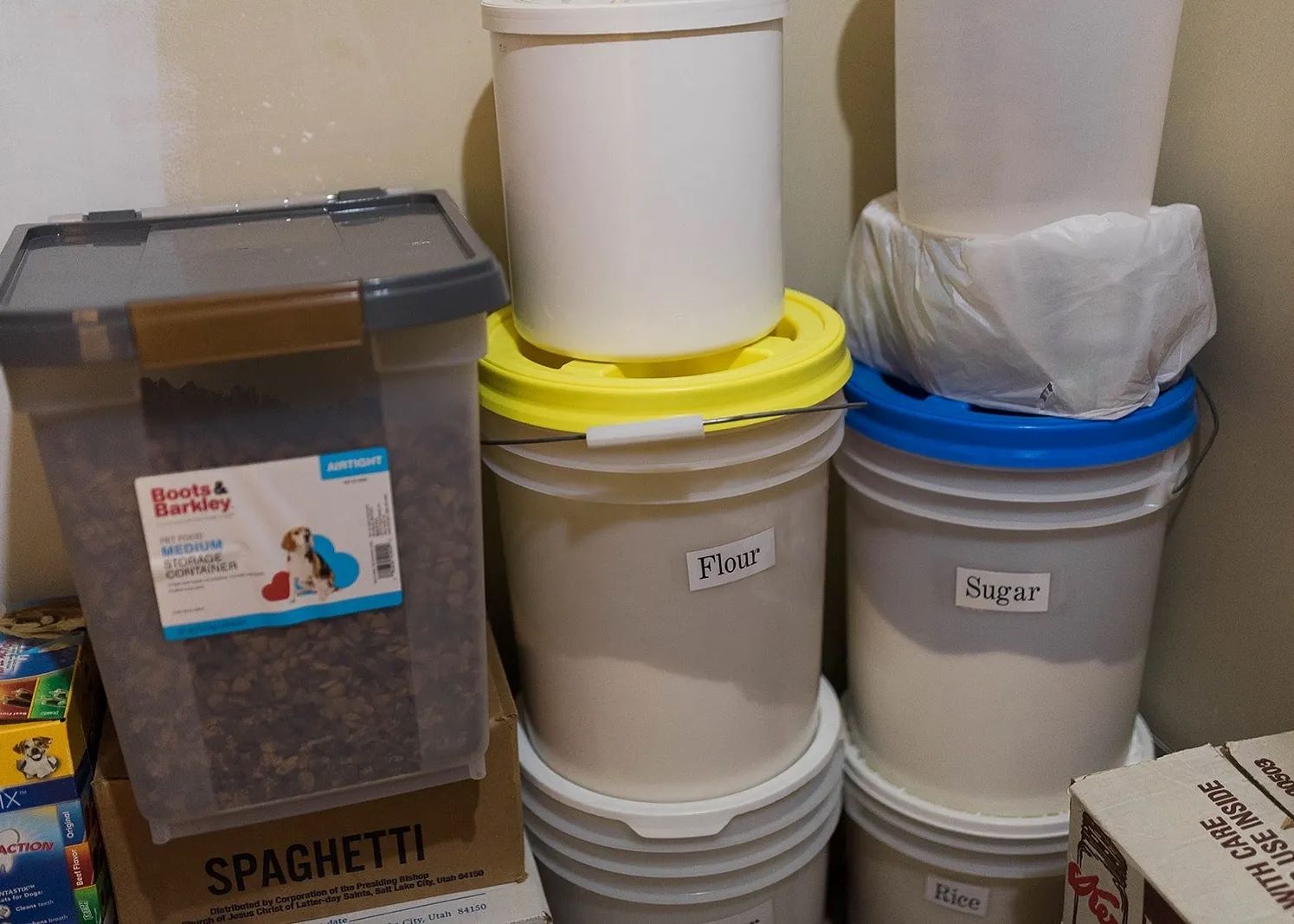
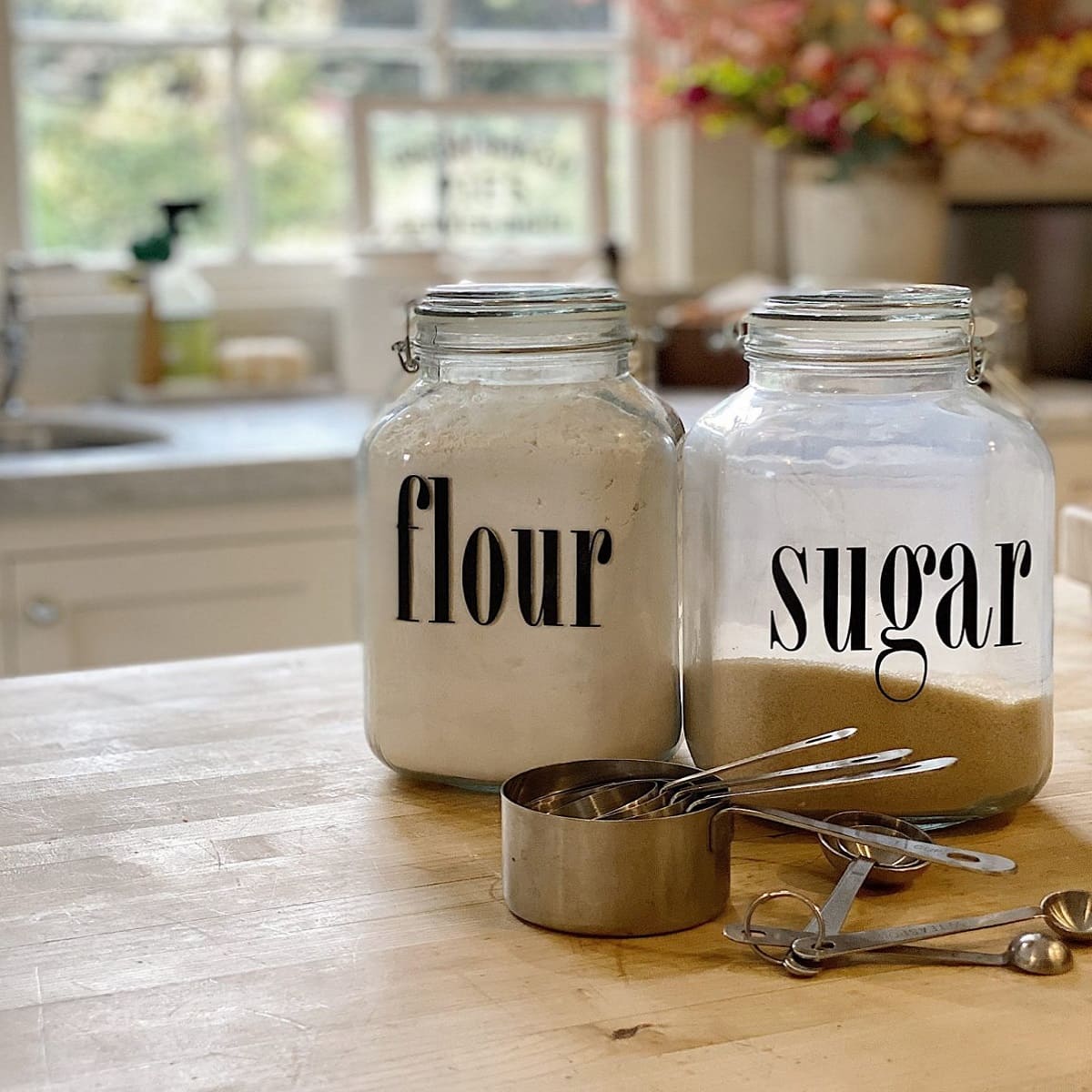
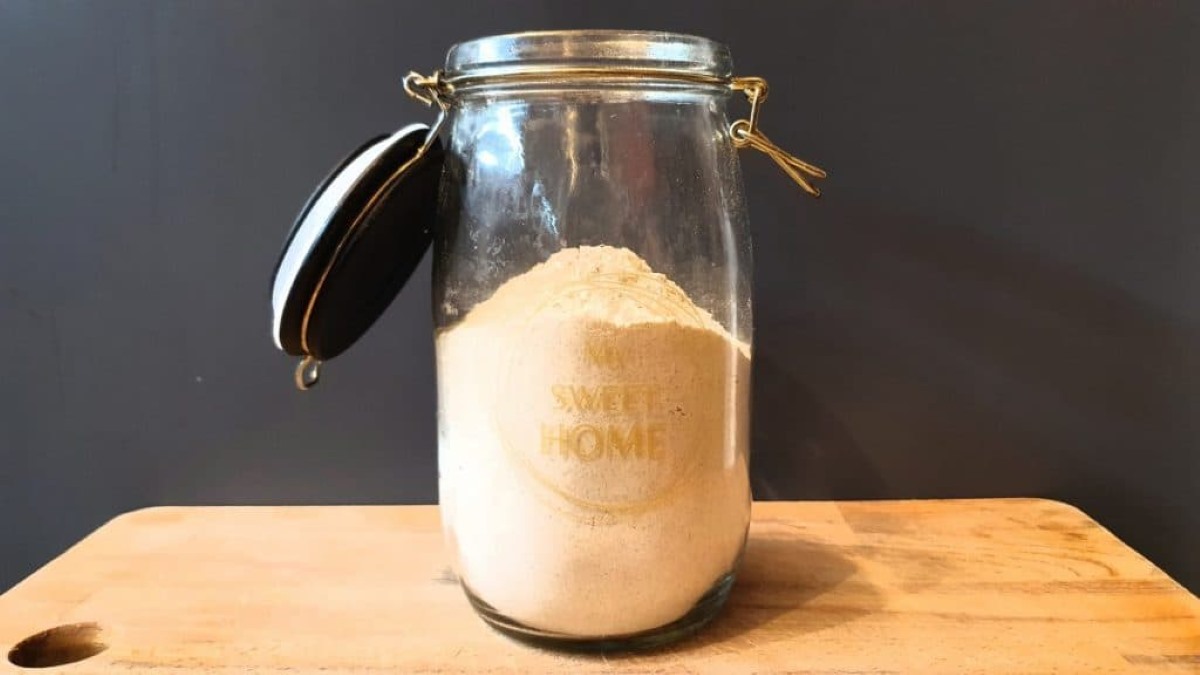
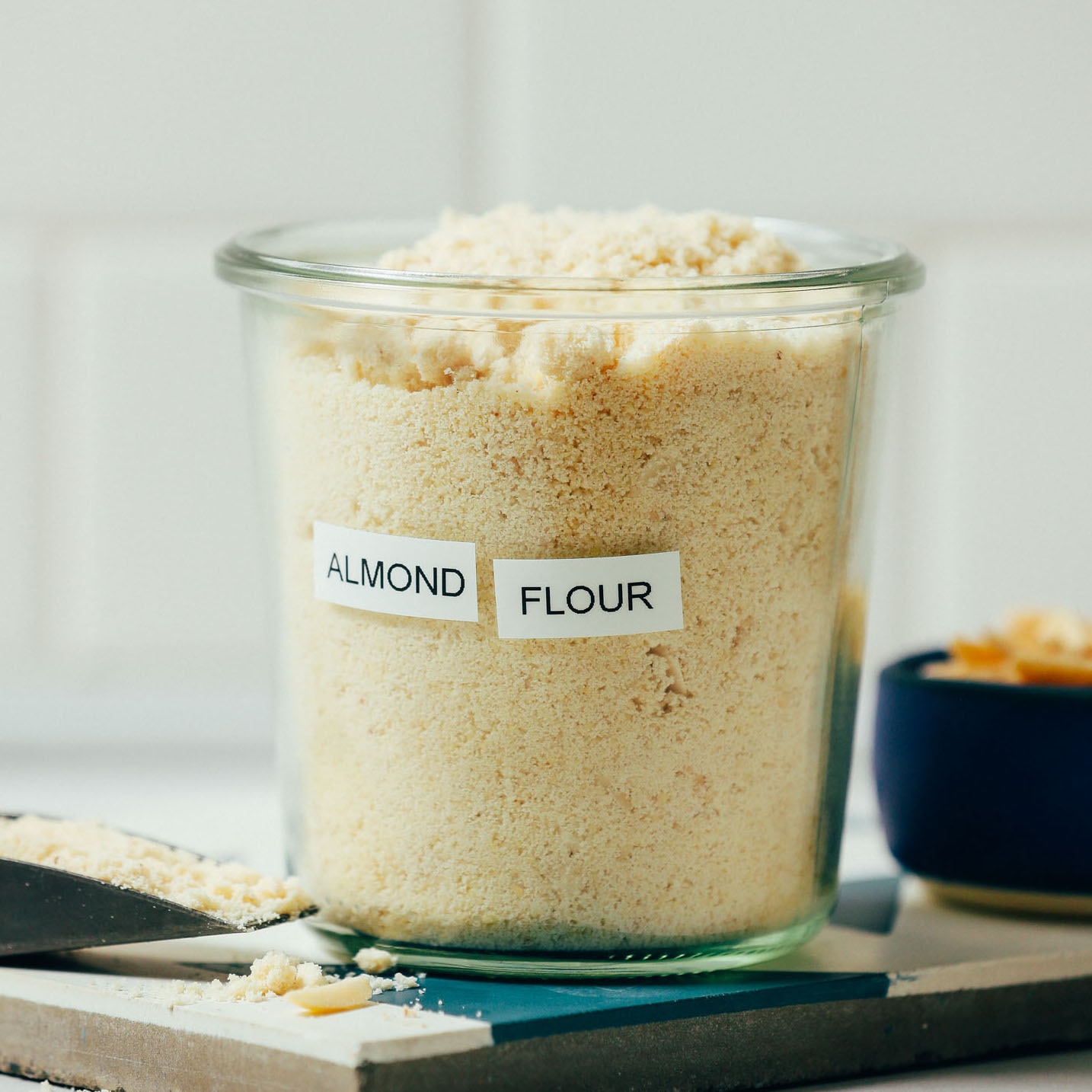
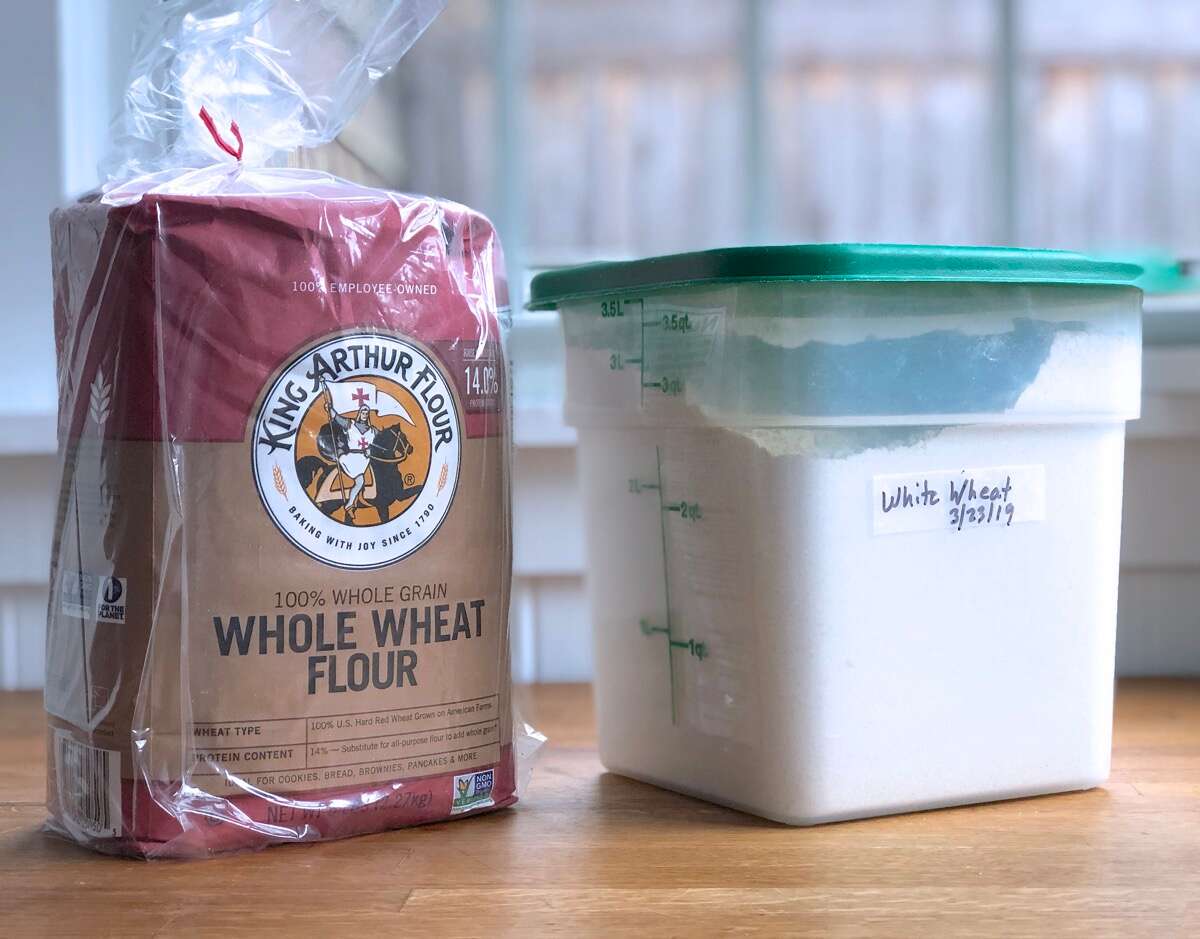
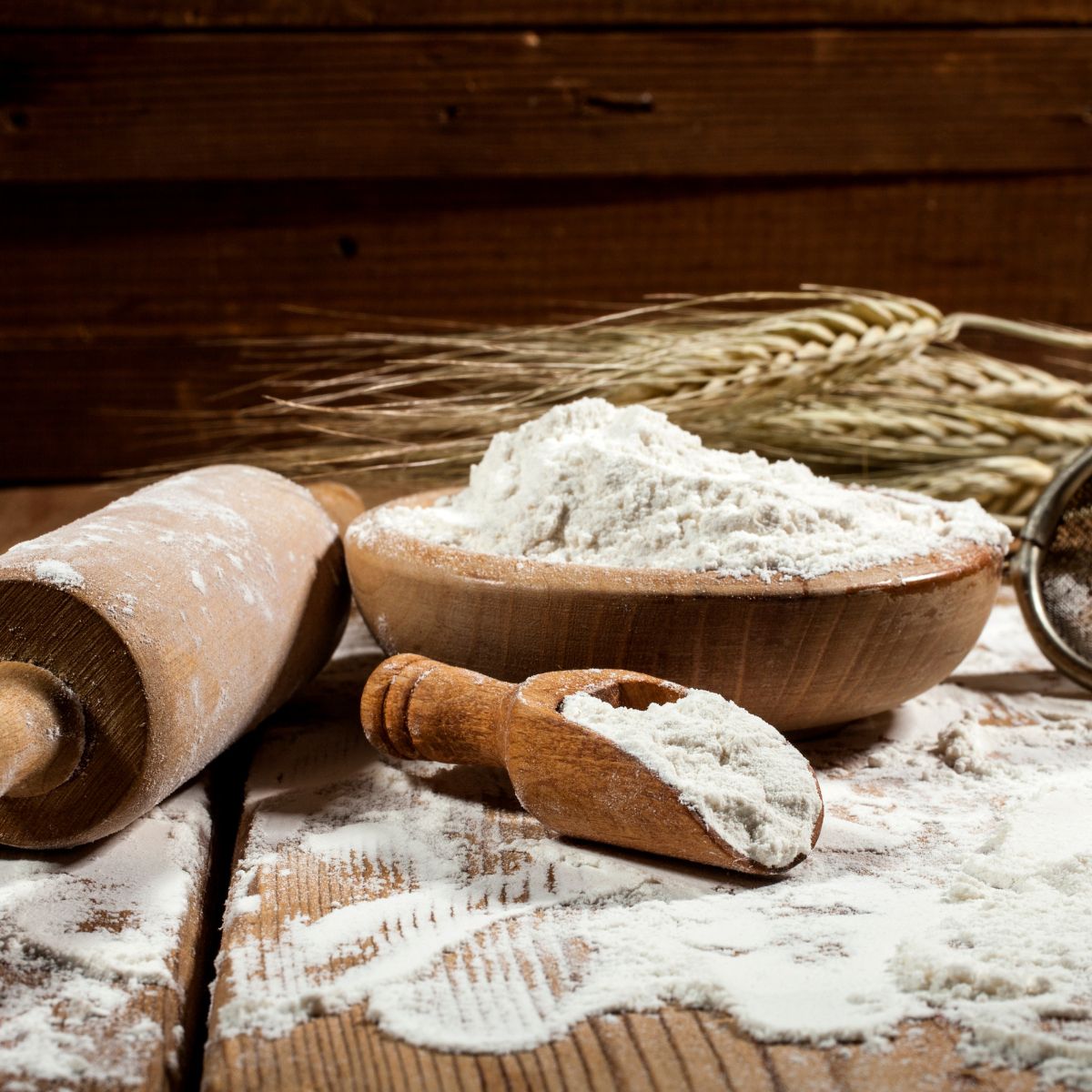
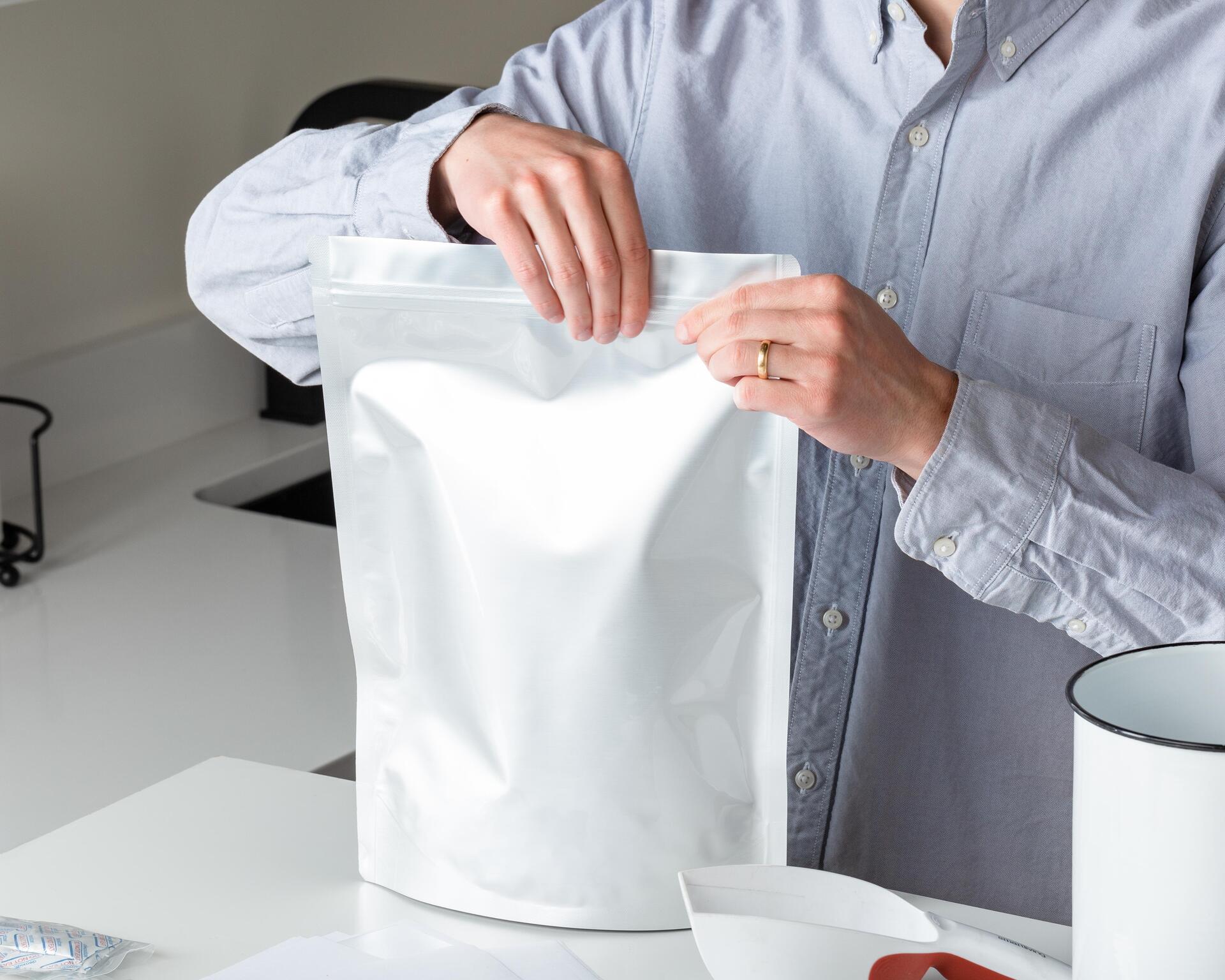

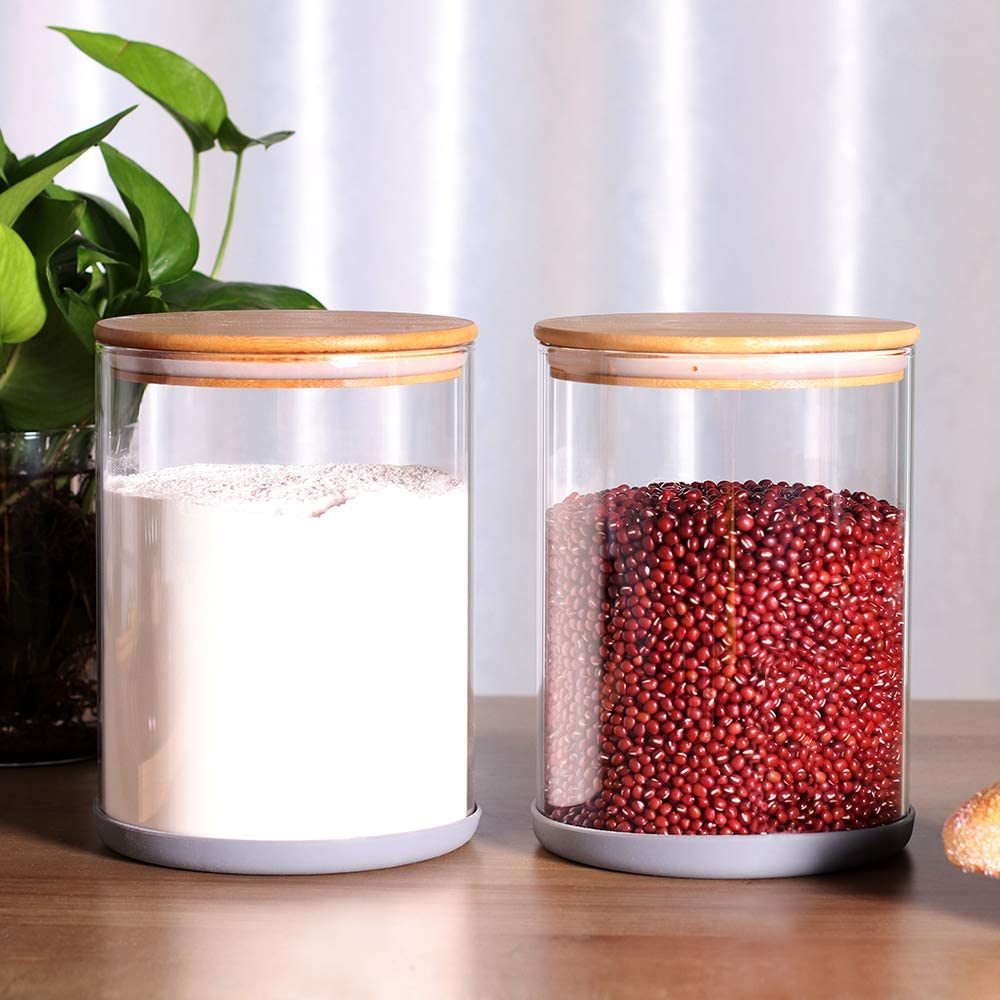
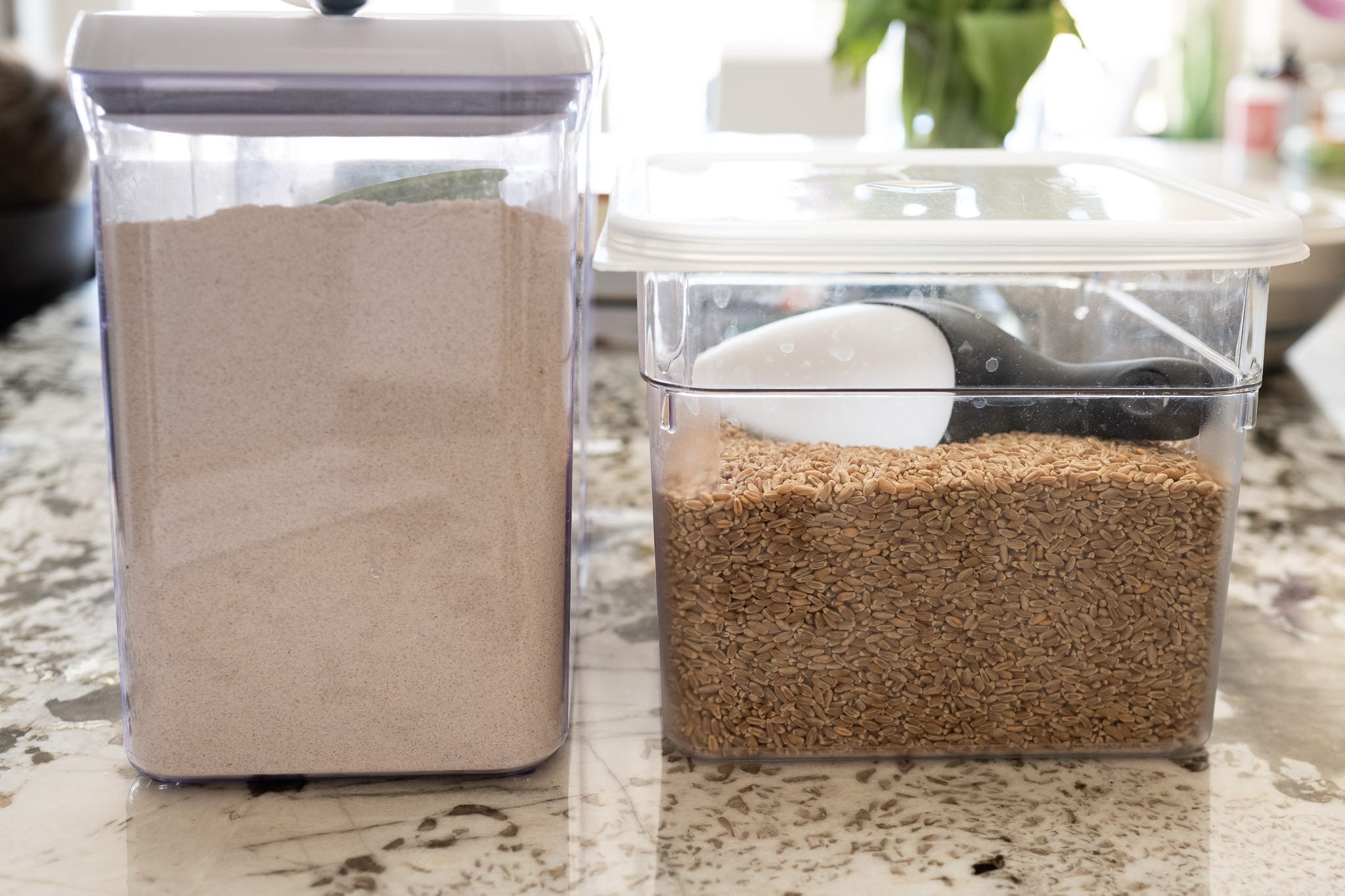





0 thoughts on “How To Store White Flour Long-Term”